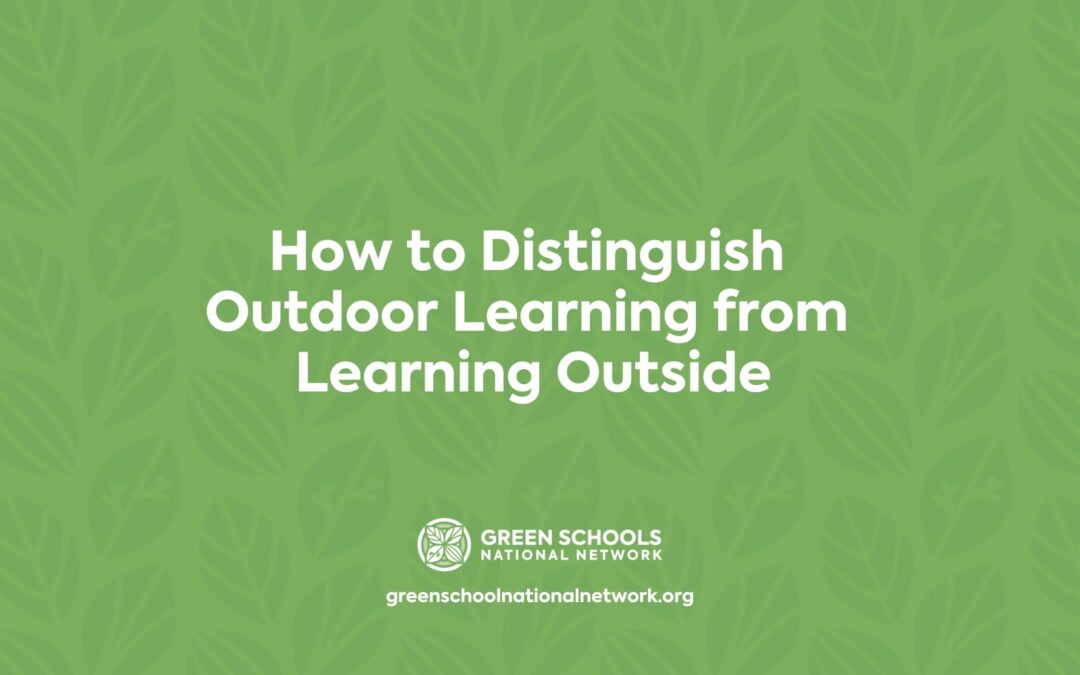Over the last several years, teachers have been shifting their classes outdoors in response to safety protocols spurred by the COVID-19 pandemic. This has been beneficial for student health and well-being for sure but learning outside could be so much more if it incorporated outdoor learning.
Outdoor learning and learning outside are not the same thing. Outdoor learning goes far beyond teaching traditional lessons in the out-of-doors. The following three ways demonstrate how.
Outdoor Learning is Place-Based
Place-based learning (PBL) uses the local community as a “classroom” to bring learning to life, immersing students in the cultures, history, people, places, ecosystems, and experiences that define their community. Through PBL, students develop a deeper understanding and appreciation of their place and how it connects to communities and ecosystems on regional, national, and global scales.
Because PBL is local in nature, how it’s taught looks different depending on where you live. California’s Plumas Unified School District implements a PBL program called Outdoor Core Mountain Kid that engages K-6 students in outdoor place-based education. Under Outdoor Core, every grade level is assigned a yearlong, place-based theme, such as birds, mammals, or fish. Learning starts on school campuses, all of which have outdoor classrooms, and expands into the surrounding environment as the year progresses. Students wrap up each school year with a project of their choosing, involving their theme, that will have a positive impact on their place.
Outdoor Learning is Interdisciplinary
There’s more to outdoor learning than just science. All core subjects can be taught using the outdoors as the context, bringing real-world meaning to concepts students learn about in the classroom. Math is a great example. Nature abounds with patterns, lessons in geometry and calculus, and ample opportunities to engage in data collection and analysis. For English Language Arts, students can do nature journaling or write poetry inspired by their observations in the outdoors. For social studies, students can explore the area’s geography and examine human impacts on their local climate and ecosystems.
An example of outdoor learning as interdisciplinary learning can be found at Maine’s Ames Elementary School, where third-grade students investigated the tick population in their schoolyard. During this study, teachers shifted their lessons to include content that would help students in their investigation. In science class, students focused on tick identification. In English class, students read informational booklets on ticks and wrote essays comparing tick species. In math class, students collected and analyzed data on tick specimens and created graphs to share their findings with the school community.
Outdoor Learning Uses the School Grounds as a Living Lab
You don’t need to leave campus for outdoor learning – your school grounds can serve as a rich living lab. School gardens and outdoor classrooms provide ready-made “laboratories” for students to conduct science experiments, solve math problems, and learn about food systems and ecosystems. Schools close to forests, waterways, meadows, and other natural features offer further opportunities to engage in hands-on outdoor learning through experiences such as water quality monitoring and restoration or community science projects.
Students in California’s Encinitas Union School District (EUSD) regularly engage in lessons at the district’s DREAMS campus. The DREAMS campus is located on the grounds of EUSD’s Farm Lab and integrates design, research, engineering, art, math, and science into hands-on experiences that revolve around solving real-world problems. Many of these experiences explore organic food production and its benefits to air and water quality.
Dive deeper into outdoor learning! Explore back issues of the Green Schools Catalyst Quarterly to find articles and case studies on PBL, interdisciplinary learning in the outdoors, and school grounds as living labs.

